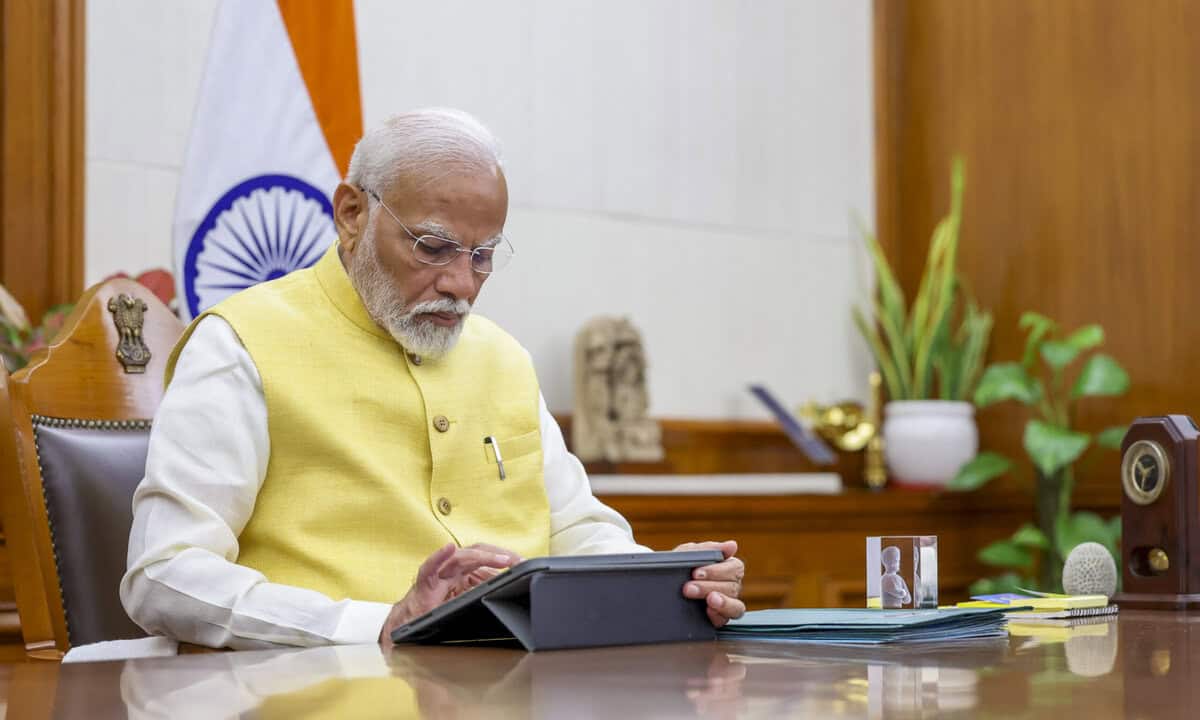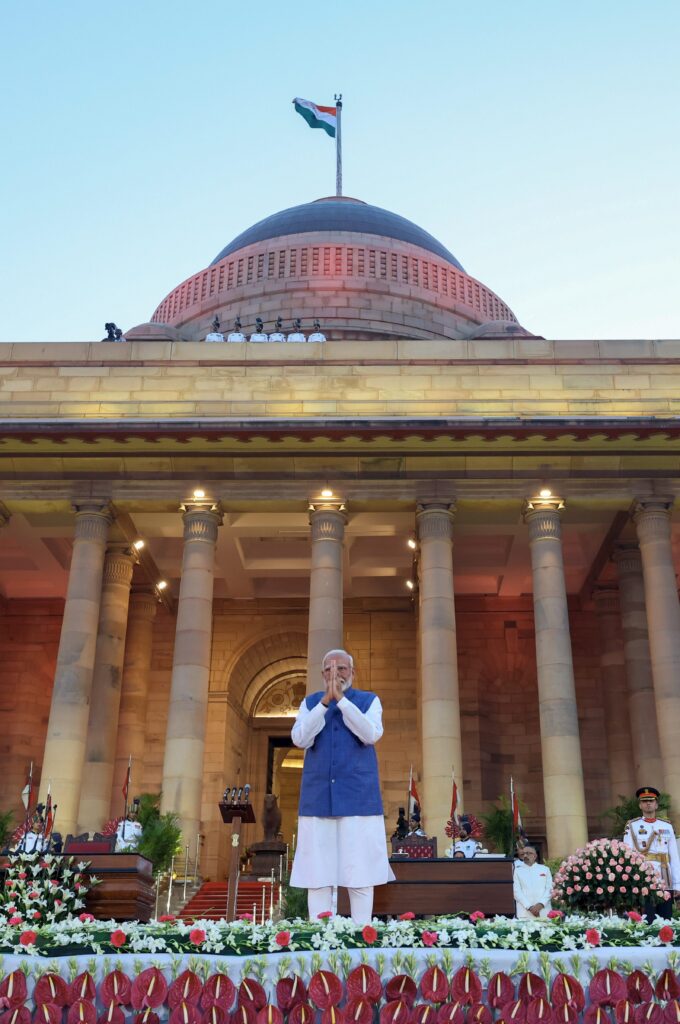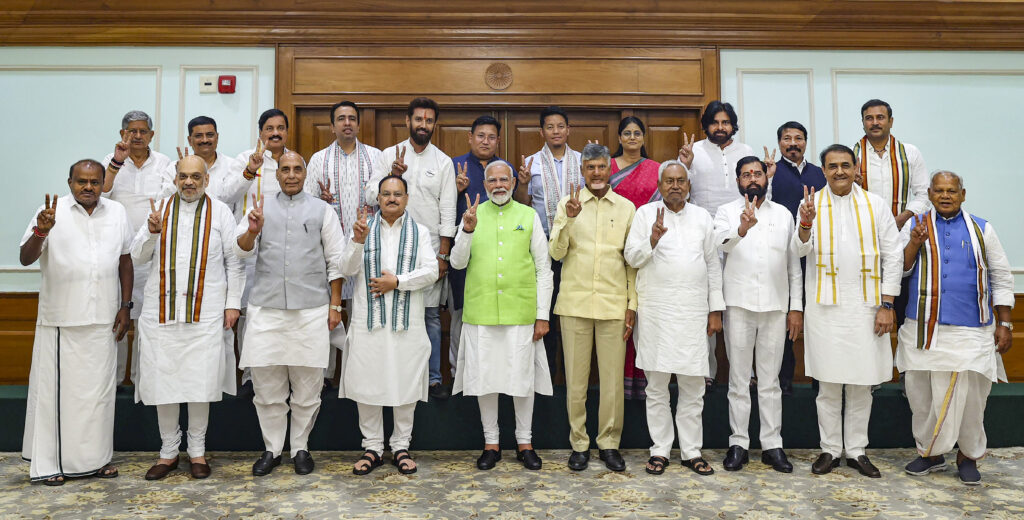
The new NDA coalition government led by Narendra Modi has just taken office, and it’s too early to predict how it will perform. India is familiar with coalitions, as it has a messy history of multi-party governments.
Former Prime Minister and BJP leader Atal Bihari Vajpayee also faced an unprecedented alliance of 24 parties from 1998 to 2004. India has experience with coalition governments, which are known for being somewhat tumultuous.
Prime Minister Narendra Modi winning a third term is a significant achievement in his political career. His party only got 240 out of the 272 seats to govern independently. So, he now leads a coalition government with the National Democratic Alliance (NDA) allies. His future depends on his partners. Modi is too smart a politician not to understand what the situation requires of him.

The NDA is a political coalition of centre-right parties led by the right-wing Bharatiya Janata Party (BJP). The allies secured 43 seats in the recent elections, bringing the NDA’s total to 283 seats, 11 more than the required number to form the government.
This is a new situation for Modi. As a leader who believed in centralising power, forming a coalition government challenges Modi’s authority. This change could significantly alter the course of his political agenda, potentially resulting in a greater emphasis on policies that appeal to the varied coalition partners rather than the BJP’s agenda.
The formation of the NDA coalition government could lead to a shift in the government’s priorities. There might be a greater emphasis on the coalition’s policies and a potential moderation of Modi’s religious nationalist agenda. This could have far-reaching implications for India’s political and social fabric.

Modi, now in his third term, is expected to continue his policies on economic reform, national security, and social welfare. Yet, he now faces the extra challenge of managing a diverse coalition. Dealing with coalition partners and running the Parliament may be challenging as he faces a more influential opposition.
Modi faces several challenges. There are lingering questions about the extent of his authority, particularly as the BJP has lost its majority. New political dynamics have emerged, with the party’s primary NDA allies now playing pivotal roles in the ruling coalition. The shift can be attributed to various factors, including regional political dynamics.
The first major hurdle was forming the government, which required him to navigate the complexities of coalition politics. Continuing his assertive and independent political style may take time and effort.
The next step is allocating portfolios that are satisfactory to our allies. Both Nitish Kumar and Naidu are tough negotiators and demand significant portfolios. Smaller allies also assert their influence, shaping the government’s policies and decisions by overseeing key ministries.
The main point is to keep the NDA together. Rumours suggest the rival INDIA coalition wanted to lure the JD (U) and TDP to form the government. This move had failed now, but it could lead to a realignment of political forces, tilting the balance of power within the coalition. Whether Modi’s NDA allies will remain loyal or undermine him is political speculation is a million-dollar question. This uncertainty, rooted in the Allies’ history of unreliability, needs to be watched.
Some of the BJP’s key allies, such as the TDP, Shiv Sena, AIADMK, and Akali Dal, have ended their partnerships in the past decade. In 2018 the TDP left the alliance because Andhra Pradesh didn’t receive special category status. Now, the TDP and JD (U) are back in partnership with the BJP.
However, in the future, Modi will need to consider the feelings of important allies like the Telugu Desam Party and Janata Dal (United).
Chandrababu Naidu and Nitish Kumar, with 28 seats between them, are labelled as “kingmakers.” They have long advocated for special status for their respective states and are known for their slippery character.

Nitish Kumar, known as ‘Palti Kurmar’ for his frequent changes, ended his partnership with the BJP in 2014 over the issue of the BJP declaring Modi the prime ministerial candidate. He later joined the NDA and again broke with the BJP in 2022 to form the government with the RJD. This year, he again returned to the NDA fold.
Due to coalition politics and a weakened mandate, passing laws for the government’s ambitious reform plans may take time and effort. Despite not having a majority, the opposition will have enough members in the parliamentary committees to prevent the passing of controversial bills. This means that Modi’s ability to push the BJP’s agenda forward will be challenged. Important policies such as the Uniform Civil Code and One Nation One Poll could be delayed, potentially slowing down policy-making and leading to a rethinking of the government’s reform plans.
Changes in political alliances wouldn’t be surprising. Modi may focus on changing his minority government into a majority over the next two or three years. But initially, it will be a tightrope walking to balance power.
